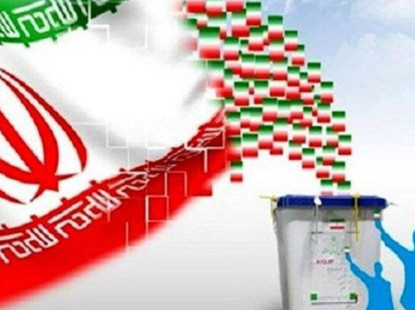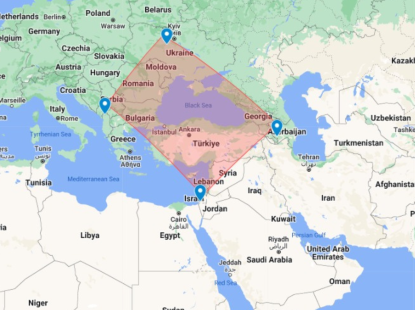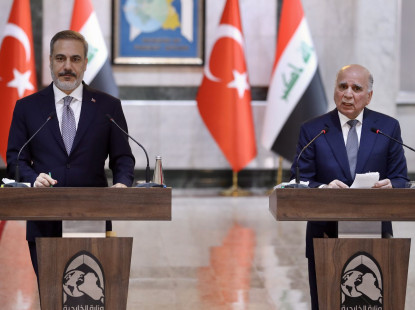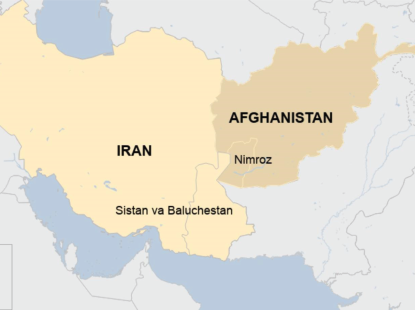Impact of the Sanctions on Iranian Academics
US sanctions on Iran have directly and indirectly impacted ordinary people. Owing to the scope and severity of the sanctions affecting various segments of society, this study limits itself by concentrating on the impacts faced by academics, including scholars, researchers, publishers, and students.
Before the JCPOA, the consequences of sanctions for Iranian scientists were grievous, particularly during 2011-2013. Iranian scientific, research, and academic institutions were effectively barred from exchanging and communicating with their counterpart institutions, and Iranian professors and students were deprived of participating in global exchange programs. Initially, these sanctions restricted the scientific contacts of Iranian scientists with foreign countries. Further along, sanctions imposed on two prestigious universities in Iran (Sharif University of Technology and Shahid Beheshti University) led to the adoption of a law prohibiting Iranian students from studying certain specialties, such as nuclear physics, in the US.1 As sanctions intensified, petroleum, petrochemicals, natural gas, nuclear energy, atomic studies, nuclear engineering, and nuclear physics were added to the list of prohibited professions.2
Following the US withdrawal from the nuclear deal in 2018, in addition to other socio-economic challenges and restrictions, the sphere of education and academic activities in Iran have been significantly affected by the newly imposed sanctions. Moreover, the policy of US maximum pressure has directly or indirectly affected the activities of scientists, academics, researchers, and students inside and outside of Iran.
According to Mahmoud Fotuhi Firuzabad, president of Sharif University of Technology: “Unfortunately, the sanctions against the country have cast doubt on the implementation of University programs in the international arena, especially financially. Although, the impact of sanctions has not caused problems in one specific area, whenever there is a financial relationship between two universities and the university tends to support a professor or student, we have problems. We cannot create the financial channel required for transfers.”3
Furthermore, the sanctions, in addition to curtailing the activities of Iranian academic communities abroad, have had considerable corollaries within Iran. An obvious example of the impacts on academics is the paucity of ink production and the surge in paper prices. Per-unit paper price in 1396 was around 70,000 toman, in early 1397 it increased to 150,000 toman and at the end of 1397, the price increased to 450,000 toman. As of now, the per-unit price is around 500,000 toman, implying that during the last three years the price of paper increased about 7 fold.4 In the new round of sanctions, ink and paper are also included in the embargo, ensuing an ink shortage in Iran.5
Subsequent to the paper and ink price hike, newspapers with years of experience are currently reducing their pages. As wrote Mohammad Quchani, editor-in-chief of the newspaper “Sazindagi”, “when the newspaper was published, the price of one kilogram of paper was about 3,500 Tomans, but now it has reached 16,000 toman. As a result, the 32-page newspaper reduced to 16 pages as well as the number of the editorial staff has been also halved.”6
Moreover, another instance regarding increasing prices of paper and books is the sale of the Tahouri Bookstore; one of the oldest bookstores in Iran, founded in 1332 (1953), opposite the University of Tehran. The 66-year-old bookstore closed on January 18, 2020.7
Furthermore, the price of scientific books and textbooks has also substantially increased (Table 1). The number of publications in most categories dramatically decreased, while the average price of books rose around 100 percent.

Source: Tasnim News (https://bit.ly/37j3Lbq)
Moreover, elevated tuition fees at private and non-governmental universities is another ramification of the ongoing sanctions. According to the Board of Trustees of Non-Governmental Universities, tuition fees for private/ public higher education institutions have increased by 10 to 15 percent.8 Consequently, reducing financial opportunities and discouraging applicants from pursuing their studies. This is complementary to other arguments, such as the lack of post-graduate job security, welfare, and economic security. Note that the inflation rates in Iran for the last two years have hovered around 30-50 percent, and, therefore, the increments in tuition fees were lower than the inflation rate. However, during the same period, the wage earners’ income, particularly in the middle class, did not increase as much as the inflation rate. Therefore, the reduction in the real purchasing power of the middle class puts significant pressure on households that send their children to university. Many of the youth prefer to directly enter the labor market because they cannot afford academic expenses.
Due to the negative mindsets that stem from the ongoing economic problems, numerous young people with a university degree, particularly from elite universities, tend to immigrate to other countries for their future careers. Furthermore, since securing a job in Iran for graduates is increasingly onerous, they are forced to seek career opportunities outside. In this regard, apart from the conservative youth, many young Iranians study only in the hope of one day finding work outside of Iran with their university degree. Iran has almost always been ranked among the top five countries in brain drain statistics. Ultimately, continuing such a situation could transform Iran into a manufacturer of human specialists for the market abroad.
In the end, the problems and challenges for the Iranian academic community and their implications can be summarized as follows (Table 2)9:

1 Foreign Policy: International universities should not train Iranian researchers in the field of nuclear physics. Young Journalist Club. 29 August 2018. Retrieved from https://bit.ly/2sLMMzi (Accessed on January 20, 2020).
2 How does higher education change after sanctions. Khabar Online News. 14 July 2015. Retrieved from https://bit.ly/30GTC5R (Accessed on January 23, 2020).
3 We cannot conceal the consequences of sanctions. ISNA. 14 July 2019. Retrieved from https://www.isna.ir/news/98042211425/ (Accessed on January 24, 2020).
4 Internet Source: https://bit.ly/37j3Lbq (Access on January 20, 2020).
5 Continuation of the inflammation of the paper market. Mehr News. 14 June 2019. Retrieved from https://bit.ly/2NQ7WUj (Accessed on January 22, 2020).
6 Is it time for the death of the newspaper in Iran. BBC Persian. 12 April 2019. Retrieved from https://www.bbc.com/persian/iran-features-47906732 (Accessed on January 22, 2020).
7 The Tahouri Bookstore has no more spirit to fight. IRNA. 18 January 2020. Retrieved from www.irna.ir/news/83637986/ (Accessed on January 28, 2020).
8 Increased tuition fees for non-state universities have been specified. IRNA. 13 July 2019. Retrieved from https://www.irna.ir/news/83394956/ (Accessed on January 23, 2020).
9 Rejection of Iranian articles due to US sanctions in reputable publications. Science Peak. 11 February 2019. Retrieved from http://www.sciencepeak.com/?p=6841
The sanctions have made it harder to print Iranian articles. IRNA. 19 July 2019. Retrieved from www.irna.ir/news/83399278/
Continuation of the inflammation of the paper market. Mehr News. 14 June 2019. Retrieved from https://bit.ly/2NQ7WUj
We cannot conceal the consequences of sanctions. ISNA. 14 July 2019. Retrieved from https://www.isna.ir/news/98042211425/ (Accessed on January 29, 2020).
- Tags:
- Sanctions
- Iran
- US
- Academic Output
- Research












